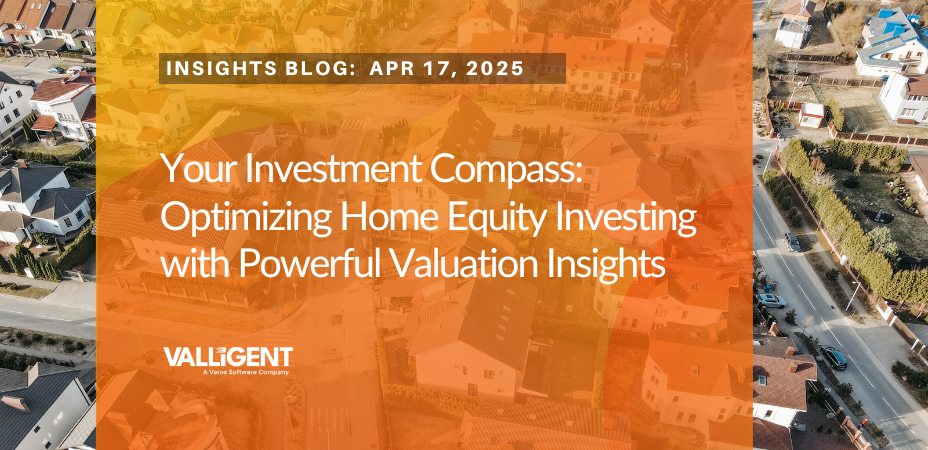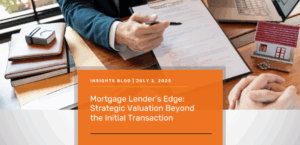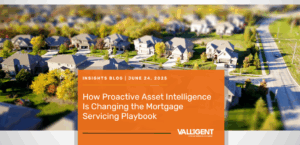Home Equity Investment (HEI) agreements are not a novel concept, but their adoption is steadily growing, signaling a meaningful shift in how capital is strategically deployed within the residential real estate market. For opportunity-driven investors, the growing adoption of this model offers a compelling opportunity to enhance investment strategies by shifting focus from traditional lending to long-term equity participation. The core principle is distinct: success is not tied to interest accrual or repayment schedules, but rather to the intelligent evaluation and projection of a property’s future value. As this model gains broader traction, it demands a sophisticated approach to valuation, market analysis, and risk management to fully capitalize on its potential.
At Valligent, we understand the unique demands of the home equity investment model and how critical accurate, cost-effective, and timely property data is at every stage of the investment lifecycle. Unlike traditional lending models that assess borrower creditworthiness, home equity investment strategies depend on the ability to assess property performance, market trends, and long-term asset value.
This shift calls for property valuation and risk management solutions that are not only precise but also flexible enough to evolve with market conditions and the investment lifecycle. Innovative tools including virtual inspections and valuations, automated valuation models (AVMs), and post disaster inspection reports, are becoming essential in underwriting initial investments, monitoring performance, and projecting returns over time.
Together with our sister company, Veros Real Estate Solutions (Veros®), we offer solutions that support this full investment lifecycle, helping investors gain the clarity and confidence needed to navigate this growing space.
Understanding the Value Proposition: HEI Agreements vs. Traditional Home Equity Lending
Home equity investment agreements provide homeowners with useful capital for whatever their needs may be, without the burden of monthly payments. In return, the investor secures a share of the property’s future value. It’s not just a position in real estate; it’s a strategic investment in appreciation potential, grounded in how well property value is assessed at both lifecycle entry and exit of the investment agreement. This is a shared equity agreement.
Considering the fundamental differences between HEI agreements and traditional home equity loans, it helps clarify the core differences in structure, risk, return, and why investors are increasingly exploring this model:
Category | Home Equity Investment (HEI) | Traditional Home Equity Loan |
Capital Structure | Investor provides cash for future equity share | Lender issues loan secured by home equity |
Repayment Terms | Lump-sum repayment at sale or maturity of agreement | Monthly payments with principal and interest |
Return Model | Based on home value appreciation or depreciation | Fixed interest income regardless of market |
Risk Exposure | Market-driven; tied to property performance | Credit-driven; tied to borrower repayment |
Valuation Needs | Lifecycle-based: entry, monitoring, and exit | One-time valuation at origination |
Relationship | Long-term equity partner | Short-to-mid-term traditional lender |
A Lifecycle Approach to Risk and Valuation
Home equity investments are not one-time transactions — they are long-term capital positions that demand continuous monitoring. Capturing full exit value requires more than a static appraisal. It calls for ongoing, informed engagement with property data at every stage.
Valligent and Veros are focused on supporting the growing needs of home equity investors by developing valuation solutions that align with each phase of the investment lifecycle. From initial underwriting to active portfolio oversight and eventual agreement exit planning, our approach centers on delivering meaningful insights that help inform strategy, manage risk, and adapt to changing market shifts and trends. As home equity investment models continue to gain traction, having valuation tools that are both credible, precise, and affordable becomes increasingly essential to help drive informed decision making.
1. Planning: Know Ideal Markets for Investments
Knowing which markets are poised for growth—or showing signs of slowing—can make all the difference when it comes to minimizing risk and maximizing returns. That’s where Veros’ VeroFORECAST comes in. Delivering quarterly home price forecasts at the ZIP code level, VeroFORECAST gives you a forward-looking view up to 24 months in advance.
With hyper-local insights at your fingertips, you can confidently evaluate market trajectories, spot emerging opportunities, and make informed decisions about where—and when—to invest next.
Whether you’re timing your upcoming move, fine-tuning your portfolio across specific regions, or preparing for your next round of capital deployment, VeroFORECAST equips you with the data-driven intelligence to assess local market projections, anticipate value shifts, and strategically time agreement exits—helping you stay ahead of the curve.
2. Entry: Underwriting the Optimal Assets
At the beginning of any home equity investment agreement, having a fast, credible, and cost-efficient way to evaluate a property’s value and condition is essential to making confident, data-driven decisions. Sure, you can opt for a traditional appraisal, but there are other alternative valuations available that may suit your needs at a lower cost.
For example, a limited scope appraisal such as Valligent’s ValPRAZE delivers a reliable opinion of value that complies with both Uniform Standards of Professional Appraisal Practice (USPAP) and Interagency Appraisal and Evaluation Guidelines (IAEG), making it a strong fit for home equity investments that may not require a full appraisal but still demand credibility and compliance. Available with cost-effective interior, exterior, or virtual inspection options performed by vetted real estate professionals, ValPRAZE typically delivers results within 48 hours. Its low revision rate and consistent performance make it a practical option for investors seeking efficiency without compromising on reliability or regulatory alignment.
3. Onboarding: Standardizing Valuation Across Portfolios
Over the past decade, virtual valuation solutions have transformed how property data is collected, verified, and delivered, bringing greater speed, flexibility, and cost-efficiency to real estate investment workflows. For home equity investors in particular, these tools offer a modern alternative to traditional appraisals without sacrificing accuracy or oversight.
As your home equity investment portfolio grows, maintaining speed, consistency, and quality across every asset becomes increasingly important. Valligent’s Virtual Property Valuation Suite is designed to support scalable onboarding with precision, efficiency, and flexibility – while maximizing measurable value to your operations.
This comprehensive suite includes virtual inspections, evaluations, appraisals, and 1004D completion certificates, all conducted through secure, live-streamed mobile device inspections with a live real estate professional, geo-location tracking, and digital data transfer. These features not only enhance transparency and security but also ensure inspections are completed quickly and reliably. They are also extremely convenient for property contacts (homeowners).
With desirable turn times and a budget-friendly delivery model, Valligent’s Virtual Property Valuation Suite helps home equity investors onboard new assets at scale, accelerate timelines, reduce operational overhead, and uphold the high standards of accuracy and compliance needed for confident investment assessments.
4. Proactive Portfolio Management: Monitoring Equity Over Time
Equity-based investing requires continuous oversight to mitigate downside risk and identify opportunities for both the homeowner and the investor. For investors managing investment agreements, routine mark-to-market visibility is not optional — it’s essential.
VeroVALUE, Veros’ automated valuation model (AVM) delivers extremely cost-effective portfolio monitoring with high-confidence property value updates at scale. With features like batch processing, confidence scoring, retroactive valuation capabilities, and nationwide coverage, VeroVALUE enables investors to track property value trends in real time, flag underperforming assets, and maintain a current view of overall portfolio health. Its proprietary analytics engine is designed to deliver valuation accuracy and transparency, helping investors respond quickly and confidently to shifting market conditions.
Whether you’re refining exit strategies, reallocating capital, or planning your next investment move, VeroVALUE and VeroFORECAST together provide the actionable market intelligence needed for confident, data-driven portfolio management.
5. Risk Response: Natural Disaster and Market Property Disruption
In home equity investing, exposure to natural disasters introduces rapid, often unanticipated risks with the potential to disrupt property values, a home’s equity, and impact portfolio performance almost overnight.
While many rely on the Federal Emergency Management Agency (FEMA) data to assess impact, that information is often delayed, broad, or incomplete. Veros’ Disaster Vision fills those critical gaps with parcel-level disaster impact intelligence, enabling investors to quickly identify at-risk properties and prioritize follow-up actions. When physical condition verification is needed, ValINSPECT Disaster can be rapidly deployed to provide timely, on-the-ground reporting, helping you revalue assets, mitigate loss, and maintain decision speed in moments of hazardous property disruption.
6. Exit: Knowing Returns and Timing Exit
As a home equity investment nears maturity—whether the homeowner is buying out the agreement or you’re selling part of the portfolio—exit timing plays a key role in overall return. Making informed decisions requires up-to-date valuations that are both economical and delivered with speed and agility.
A trusted method is to pair an automated valuation model (AVM) with a desktop or traditional appraisal to validate the property’s current value is consistent with each method. When both results align, you gain stronger confidence in the asset’s worth, further supporting better decisions around pricing, timing, and return forecasting.
Whether your strategy calls for a rapid update or a comprehensive appraisal, Valligent provides the valuation intelligence you need to exit investments with confidence and security.
Your Valuation Partner at Every Investment Phase
Veros and Valligent are committed to being more than just service providers. We aim to be strategic partners throughout the home equity investment journey. By focusing on actionable intelligence and innovative valuation solutions tailored to the targeted demands of the home equity investment lifecycle, we empower investors to make well-informed decisions and capture the long-term potential of this growing market. Rather than offering “one-size-fits-all” solutions, we provide flexible support designed to meet your investing needs at each level and stage — from entry to exit — helping you stay focused on what matters most: making informed, confident determinations and investment decisions.
Ready to take a smarter approach to home equity investments?
Connect with us today to learn how Veros and Valligent can support your investment strategy at any stage of the investment agreement lifecycle and be sure to download our Home Equity Investment one-sheet for a quick overview of how our solutions align with your investment goals!




